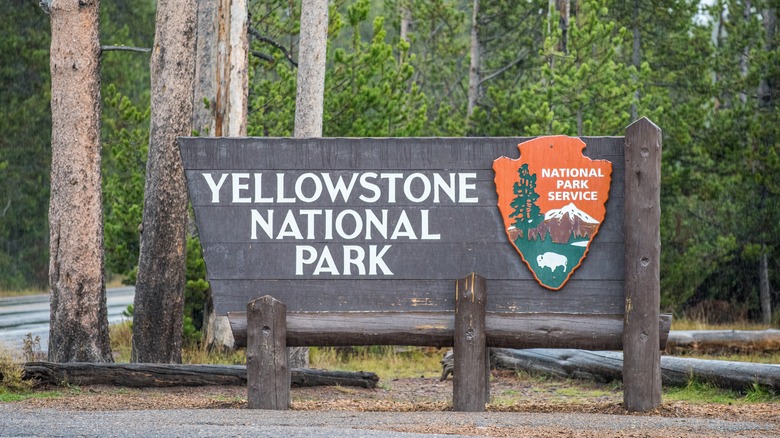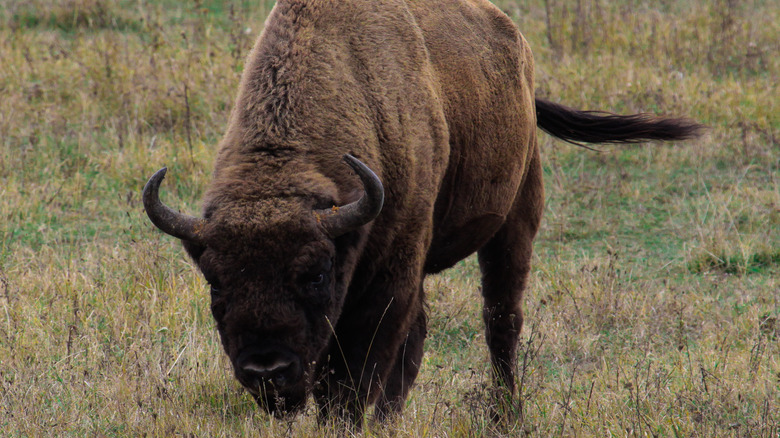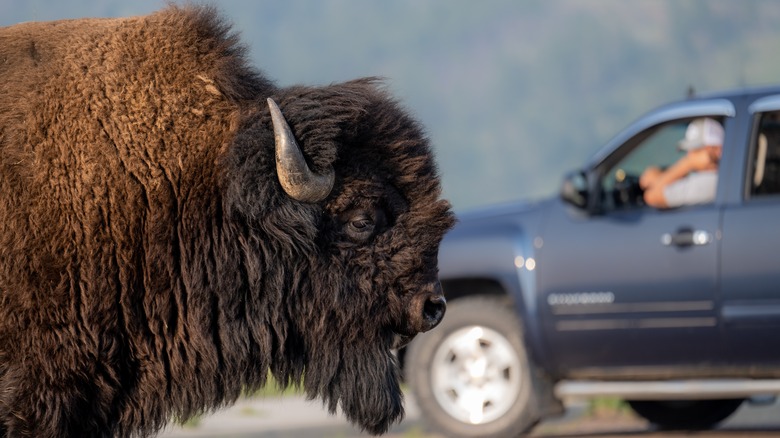Our National Parks Are Home To One Of The Most Dangerous Animals You Could Encounter
During the 19th century, the vastness of the unspoiled American West gave rise to the idea of creating national parks in order to preserve and protect those landscapes and the animals that lived within them. Today, there are national park units found across the entire country. These parks feature a wide array of landscapes, plants, and animals. The diversity of these natural elements have led many outdoor enthusiasts to check off as many parks as possible from their national park bucket list.
Although the number of park units now numbers more than 400, the original national park is still one of the most popular. Created in 1872, Yellowstone National Park is not only the first national park, it remains one of the most visited, is among the largest, and makes the list of most dangerous national parks in the United States. Part of the reason it is considered a dangerous park is because one of the creatures to beware of when adventuring in Yellowstone –- or any other national park where this animal lives.
Like Yellowstone, this animal embodies the American West of the 19th century. It once covered the plains in unimaginable numbers. Thanks largely to the efforts of the National Park Service, the American bison has been revived from the brink of extinction. While the increase in numbers is to be applauded, the American national mammal remains one of the most dangerous animals you can encounter in a national park.
How to tell if a bison may charge and what to do if it does
Bison are a very popular draw for outdoor and wildlife enthusiasts. While Yellowstone remains the top location for viewing bison, those hoping to get a glimpse of North America's largest mammal have a bevy of private and public herds to view. As part of their conservation efforts, the U.S. Department of the Interior currently oversees 19 herds spread over 12 states. Regardless of where they are, bison present potential danger.
Although they are herbivores, bison are known to be unpredictable and capable of charging at any time. So, how do you know if a bison is about to charge? According to the Catalina Conservancy's bison safety brochure, some signs that a bison is becoming agitated include the animal raising its tail, staring continuously, stomping or pawing the ground, snorting and bellowing, and swinging its head back and forth.
If you see a bison exhibiting any of those signs, you should try to move further away from the animal and get out of its sight. However, if the bison does charge, you have limited options. Quickly finding a place to hide is perhaps your best option. If that's not possible, try to deter the attack by waving frantically, making noise, and throwing rocks or other objects towards the charging bison. In a worst-case scenario when a bison contacts you during a charge, your best bet is to play dead and hope the bison ceases its attack.
How to stay safe while viewing American bison
Because they are exposed to hundreds of thousands of visitors each year, many bison in herds within U.S. national parks are becoming somewhat acclimated to humans and less skittish than before. However, that does not mean humans should become more comfortable being close to them. The National Park Service requires visitors to stay at least 25 yards away from bison within parks. Given that bison have attacked more park visitors than any other animal within Yellowstone (via The New York Times), some with deadly consequences, you would think this stipulation would be roundly heeded. Unfortunately, so many park visitors have routinely penetrated this parameter, the NPS has issued additional warnings. These measures are meant to protect both the public and the bison herds after numerous incidents which resulted in injury and death to members of each.
Those who wish to view bison without provoking an attack should follow a few simple rules, which aren't much different than when viewing any dangerous wildlife. First and foremost, maintain a safe distance. While NPS mandates 25 yards (75 feet), a better safe-distance parameter would be a bit further out –- 125 feet or more. While this doesn't guarantee safety, it does give you more reaction time. Whenever you are in the presence of bison, you should watch them continuously, monitor for any signs of agitation, and never turn your back to the animals. If you have a dog with you, keep it leashed and stay even further from the herd.


